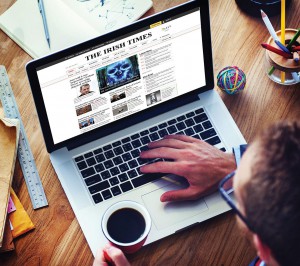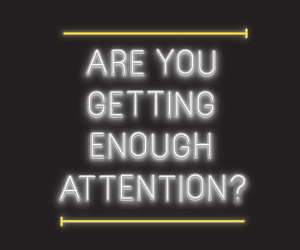The Irish Times is the first Irish daily broadsheet to start charging readers to access content online. Jim Miley, Business to Consumer Director of the Irish Times, talks to IMJ about the new online offering and what it means for the company.
It was only a matter of time before one of the main Irish daily newspapers started charging for access to its online content. While many industry observers believed that Independent.ie would make the first move, given that management indicated in 2014 that it was on the cards, in the end it was the Irish Times that made the first move.
As paywalls go, the Irish Times’ paywall strategy is what’s known in the newspaper industry as a “leaky paywall” as it allows users access to some free content, up to a maximum number of articles per week. For heavier users, however, it has a number of subscriptions that offer different benefits including access to its archives, its, while at the same time offering them a range of other add-ons like multi-platform access to the popular Irish Times Crosswords, the archives which date back 150 years as well as free eBooks and other special offers for a basic price of €12 per month.
The idea of giving away content online for free is arguably one of the biggest mistakes the newspaper industry has made in its recent history. The rationale behind charging one set of readers a fixed price for content in a printed format and not charging online readers for more or less the same content was flawed from the outset. For most newspaper publishers, however, it was a race to drive much needed online traffic and capture a slice of the ever increasing digital advertising pie. While it has worked for some, it hasn’t worked for others and any gain in online revenues has not offset declines in circulation and advertising revenues.
Amidst all of this jockeying for position, the issue of charging for content appears to have been lost or at least put on the back burner. In recent years, however, more and more newspaper groups have realised that if they are to continue to fund the creation of content, in whatever shape or form it is distributed, then it has to be paid for by the end user. News UK, The Wall Street Journal, The Economist, the Financial Times and the New York Times have all erected paywalls around their sites and while they were initially greeted with a fair degree of opprobrium, the dust eventually settled and their online subscribers grew
So when Jim Miley, business to consumer director of the Irish Times, read some of the negative online comments made by readers when they heard details that the publisher was rolling a paywall, he was not one bit surprised.
“People have always chosen what they bought when it came to content and I don’t think digital is any different. We obviously can’t force people to subscribe online but what we can do is offer them a compelling, unique and quality Irish Times experience online that they can’t get elsewhere,” he says.
Erecting a paywall around IrishTimes.com was not a decision that was taken lightly he says.
“This decision was been almost two years in the making for us and as we were making this decision, we were investing heavily in digital to position ourselves as a digital-first media organisation which in turn meant significant changes in our day-to-day operations, particularly in how we gather and disseminate our content. Our whole content flow has shifted so that we are now publishing stories and articles at a time when our readers most want them. So the print deadline is now one of a whole series of deadlines during the day. But essentially we have become a digital first organisation and that has been a hugely significant change within the Irish Times as it has essentially transformed our business.”
He points out that the paper already has nearly daily 5,000 subscribers to its ePaper, a full digital replica of the printed newspaper. This, he adds, is a good example of a cohort of readers who are prepared to pay for digital content.
As to whether or not there is a typical profile of a reader who is prepared to pay for content, Miley points out that it’s more to do with the specific needs and wants of different audience segments.
“I don’t know if there is a typical profile and we would have asked that question of lots of other publishers when we were looking at this. I think it’s probably less about the profile of the individual reader and more about the specific needs of individual pools of readers. So for example there are readers who are particularly interested in areas like sport, business, health and culture. So we are building content around what these groups of readers like and want but that content has to be good, relevant and unique and have the quality Irish Times stamp on it. The great thing about digital is that, through good use of analytics, it allows us segregates the market and if we create the right content and user experience for them, then we hope they will pay for that,” he says.
The growing importance of data and analytics will also be key for the paper when it comes to understanding its readers, says Miley.
“We have invested heavily in data analytics and we now have a team of six highly specialised people who work on a day-to-day basis with all sides of the business giving us the information that allows us to make better decisions on the editorial side as well as the commercial side of the business. From our readers’ point of view, it informs us about things like the kind of content they like and what time of the day they like to read the different types of content but it also allows us develop a first-hand relationship with our readers. Previously it was more or less a second hand relationship: now do live research on an ongoing basis and that’s extremely valuable not only to us but to our advertisers when it comes to targeting the audiences they want,” concludes Miley.
First published in Irish Marketing Journal (February 2015)© to order back issues please call 016611660





















